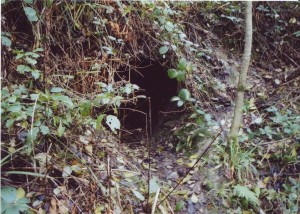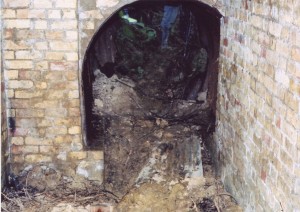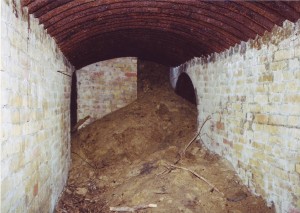The hamlet of Gibbet Oak lies 1.5 miles south-east of the town of Tenterden.
| Name | Occupation | Posted from | Until |
|---|---|---|---|
| Sergeant Raymond Smith | Garage manager |
27 Apr 1941 | 03 Dec 1944 |
| Private Harold William Bashford | Farm labourer |
10 Jan 1943 | 03 Dec 1944 |
| Private George Ewart Freeland | Fertilizer sales rep |
27 Jun 1940 | 03 Dec 1944 |
| Private John Hepworth | Law student later Bank Manager |
27 Jun 1940 | 03 Dec 1944 |
| Private William Hook | Carpenter |
Unknown | 03 Dec 1944 |
| Private John Levi Moss | Tractor driver |
Unknown | 03 Dec 1944 |
| Private Gordon Robert Orpin | Farmer |
Unknown | 01 Apr 1943 |
| Private Louis Pugh | Secretary & Director Aimee Lloyd & Co (1923 Ltd) |
06 Oct 1942 | 28 Jun 1943 |
| Private John Raymond Reed | Dental technician |
Unknown | 03 Dec 1944 |
| Private Philip MacDonnell Sanderson | Wine merchant |
21 Jan 1941 | 03 Dec 1944 |
| Private John Alfred Weller | Farmer |
02 Jan 1943 | 03 Dec 1944 |
The first operational base for the Patrol was sited on the opposite side of the road from Gibbet Oak on Kench Hill and used an old hollowed out oak tree as a trapdoor, unfortunately it did not last long because a courting couple in the throws of passion accidentally set the trap door off. The local group leader Lieutenant Luke had to think quickly to cover it up and decided to blow a few trees up in a nearby orchard as well as the old oak tree and the OB.
When the local policeman came down the road to see what was going on Luke claimed it was a land mine that had gone off ! With this problem solved Lieutenant Luke contacted HQ for Kent at The Garth and Captain Norman Field quickly arranged a new OB whilst all the stores from the old OB were taken to Auxilier Louie Pugh’s house for storage until the new base was finished.
The second OB was built at Gibbet Oak Farm. It was sited at the edge of a wood on land owned by Lieutenant Luke. The Patrol built its own hideout and used a summerhouse as cover. The hide had a hydraulic system for opening and closing the entrance which was installed by Sergeant Ray Smith, the local garage owner. It was a home-made design consisting of steel girders supporting corrugated iron roofing sheets covered with soil. The escape tunnel led to a small wooded gully.
In "Wartime Kent" by Oonough Hyndman George Freeland recalled he was part of Fungus Patrol, this is confusing as Fungus Patrol was at Aldington; "There was a hole in the ground covered with a mat and steps going vertically down into a cave. It was built by the Royal Engineers and there were bunks for sleeping in, food and a loo and as soon as the enemy arrived we were supposed to disappear at night and go in there".
Arms and explosives were initially hidden in a dry (usually) water course in Finchbourne Wood. When Norman Field took over from Peter Fleming he decided it was prudent to make better arrangements !
Jack Moss remembered having a fry up of steak and onions in the OB towards the end of the war.
Auxilier Jack Moss said “You didn't go to the OB very often, there was no point. As long as you knew where it was, we would go maybe once every couple of months.”
Gibbet Oak Patrol
The Patrol initially trained at The Garth which was the main HQ for the units in Kent but Intelligence Officer Captain Norman Field decided to set up another training facility at the gamekeeper's cottage at Angley Wood, near Cranbrook. The Patrol also trained here and eventually in 1943 a second headquarters was established at Wenman’s Cottage, on the edge of Angley Wood, near Cranbrook, Kent to serve all the Patrols in area around Tenterden.
Certain Patrol members were also sent to the main HQ for Auxiliary Units at Coleshill near Swindon for more intensive training than they got locally which they would then take back and teach to their Patrol team members. They were often shown a mock operations base OB at Coleshill while they were there.
Auxilier Jack Reed told Louie Pugh's son about an exercise the Patrol did one night: “The exercise was against a local army base around Folkstone. The man in charge of the base was a hundred per cent sure that the Patrol could not get in and mark targets without being spotted by his guards. They proved him wrong by breaking in and leaving markers all over the vehicles to say they had been there, then escaping without one of them being caught!”
Auxilier Jack Moss: “We went to The Garth once a month on a Sunday and also trained at Coleshill and at Keepers Cottage at Angley Wood near Glassenbury. There was a local Patrol in the area, but we never met them. We had lectures, grenade throwing, explosives practice, unarmed combat, shooting and how to crawl through barbed wire without cutting it so as not to leave any evidence. We were not to engage the Germans but to destroy their supplies. Our weapons were for defence not attack. We were taught to carry our Thompsons on fully automatic but to only fire one shot. You had to press and release the trigger very quickly. We sometimes saw people at Angley Wood, from other Patrols, we recognised. We never asked them any questions for security reasons.We were not to actively engage the Germans. We were to operate at night and it was sabotage. The knife was to be used to get rid of a sentry so you could place explosives but we were not to fire a pistol at them.
I went down to Coleshill. My parents knew I was gone for the weekend. But I just said I was going for training.”
Jack Moss: “Our weapons, the Tommy gun and the revolver and the knife really, were only for defence, not attack.”
Jack Moss: “We got no recognition at all. It was just a relief it was all over and you didn't have to deceive your parents or anybody that you knew. Having said that, one never talked about it to anyone afterwards for a long, long time. Before D-Day we were asked whether or not we would be prepared to drop into France. This was more of a feeler than a reality. The possibility of being captured if wounded was not talked about a lot. I think it was the decision of the Patrol Leader or the rest of the Patrol to eliminate the people who could not get away.”
George Freeland: “We had very few weapons, but plenty of explosives, as our primary role was sabotage. We were trained by Lovat Scouts in concealment and night movement. At The Garth we were nicknamed by the trainers the Fungus Patrol because of our luxuriant moustaches. [Confusing as Aldington is Fugus Patrol]. Before D-Day we were called for a special meeting on Romney Marsh with high-ranking officers. If things went wrong during the Normandy landings we were to be dropped behind the lines to help the Free French as saboteurs. We were shocked. What about our wives and families. No provision had been for them if something happened to us. When the war ended we were filled with relief and elation.”
Around 1941 Rolvenden Patrol was stood down and merged with Gibbbet Oak Patrol.
Some members of the Rolvenden Patrol believed that the Patrol was stood down due to a lack of a credible threat of German invasion and because the Patrol lost some men and was deemed non-operational. HQ at the Garth did not tell anyone the real reason for the Patrol being stood down.
TNA ref WO199/3391 and WO199/3390
Hancock data held at B.R.A
Phil Evans
Adrian Westwood
David Pugh son of Auxilier Louis Pugh
Stephen Sutton for letting us use his interview with Jack Moss and George Freeland


